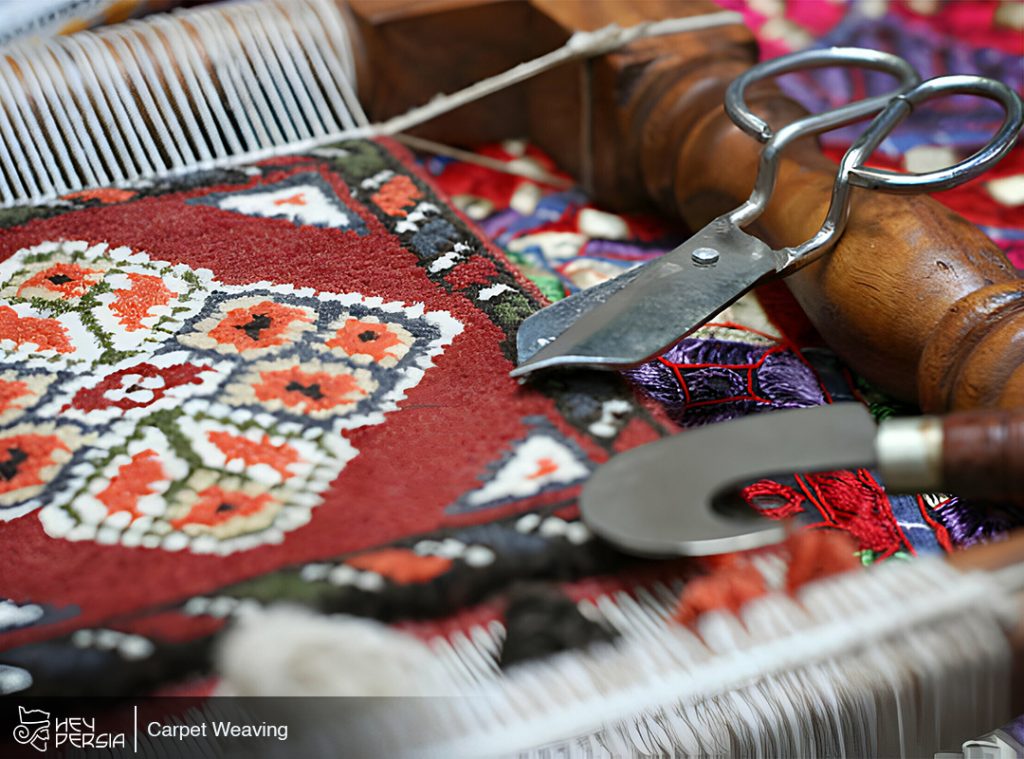Iran has a rich cultural heritage that is reflected in its diverse handicraft industry. Renowned for its exquisite craftsmanship, the Iranian handicraft sector has been a vital part of the country’s cultural and economic identity for centuries. This overview explores the key aspects of Iran’s handicraft industry, including its historical significance, diverse range of crafts, economic impact, challenges, and potential for the future. Learn more about Iran’s Handicraft Industry at Hey Persia.
Historical Significance of Iran’s Handicraft Industry
Iran’s handicraft traditions date back thousands of years, deeply rooted in the country’s history and culture. The skills and techniques passed down through generations have contributed to the creation of unique and distinctive crafts. Traditional crafts such as carpet weaving, pottery, calligraphy, metalwork, and miniature painting have been practiced for centuries, becoming integral to Iran’s identity and global reputation.

Economic Impact Iran’s Handicraft Industry
Iran’s handicraft industry holds significant economic importance, providing employment opportunities for a large number of artisans, particularly in rural areas. The production of handicrafts contributes to both domestic and international markets, generating revenue for artisans and bolstering the overall economy. The export of Persian carpets, in particular, has been a major source of income for the country.
Moreover, the industry fosters cultural tourism as visitors are drawn to the authenticity and uniqueness of Iranian handicrafts. Artisan workshops and markets become cultural hubs, attracting tourists interested in experiencing the craftsmanship firsthand. This intersection of culture and commerce creates a positive feedback loop, enhancing the economic impact of the handicraft sector.
Traditional Crafts of Iran’s Handicraft Industry
1. Pottery and Ceramics
Iranian pottery and ceramics showcase a diverse range of styles and techniques. From the delicate blue tiles of Isfahan’s mosques to the vibrant colors of Yazd’s traditional pottery, Iranian artisans have mastered the art of creating aesthetically pleasing and functional ceramic pieces. The combination of traditional methods and innovative designs keeps the pottery industry thriving.
2. Calligraphy and Illumination
Calligraphy has been an integral part of Iranian art, reflecting the importance of the written word in Persian culture. Masters of calligraphy skillfully create intricate designs using Persian script, turning simple words into visually stunning pieces of art. Illumination, the embellishment of manuscripts with intricate patterns and designs, is often combined with calligraphy to produce beautifully decorated books.
3. Carpet Weaving
One of the most renowned handicrafts in Iran is carpet weaving. Persian carpets are celebrated for their intricate designs, vibrant colors, and unparalleled quality. Regions like Isfahan, Tabriz, and Kashan are famous for producing carpets that are not just utilitarian items but also works of art. The craftsmanship involved in creating these carpets has been recognized by UNESCO, which designated Iranian carpet weaving as an intangible cultural heritage.

4. Metalwork
Iranian metalwork, particularly in copper and brass, is characterized by its intricate patterns and detailed craftsmanship. Traditional items such as trays, samovars, and vases showcase the skills of artisans who meticulously engrave and decorate metal surfaces. Isfahan and Kerman are known for their distinct styles in metalwork, attracting collectors and enthusiasts from around the world.
5. Miniature Painting
Miniature painting is a unique Iranian art form that involves creating intricate, detailed paintings on a small scale. Often depicting scenes from Persian literature or historical events, miniature paintings require precision and patience. This traditional craft has persisted through the ages, with contemporary artists incorporating innovative elements while maintaining the essence of Persian miniature art.
Challenges of Iran’s Handicraft Industry
Despite its cultural significance and economic contributions, Iran’s handicraft industry faces various challenges. Globalization and mass production have led to increased competition from cheaper, machine-made alternatives. Additionally, economic sanctions imposed on Iran have affected the industry’s ability to access international markets and materials, hindering its growth and potential.
Furthermore, the lack of modernization in certain aspects of the industry, such as marketing and distribution, poses a challenge in reaching a broader audience. Adapting traditional crafts to contemporary tastes while preserving their cultural authenticity is a delicate balance that the industry must navigate.
Potential for the Future
Despite the challenges, there is significant potential for the revitalization and expansion of Iran’s handicraft industry. Leveraging digital platforms for marketing and e-commerce can open up new avenues for artisans to reach global audiences. Collaborations with international designers and institutions can bring fresh perspectives to traditional crafts, creating products that appeal to a broader consumer base.
Investing in education and training programs for artisans, especially in the use of modern technologies, can enhance their skills and make the industry more adaptable to contemporary demands. Government support in terms of financial incentives, market access facilitation, and infrastructure development can further stimulate the growth of the handicraft sector.
In conclusion
Iran’s handicraft industry stands as a testament to the country’s rich cultural heritage and artistic prowess. Preserving and promoting these traditional crafts not only sustains the livelihoods of artisans but also contributes to the global appreciation of Iran’s cultural identity. With strategic interventions, the industry can overcome challenges and continue to thrive, ensuring that future generations inherit a legacy of unparalleled craftsmanship.





